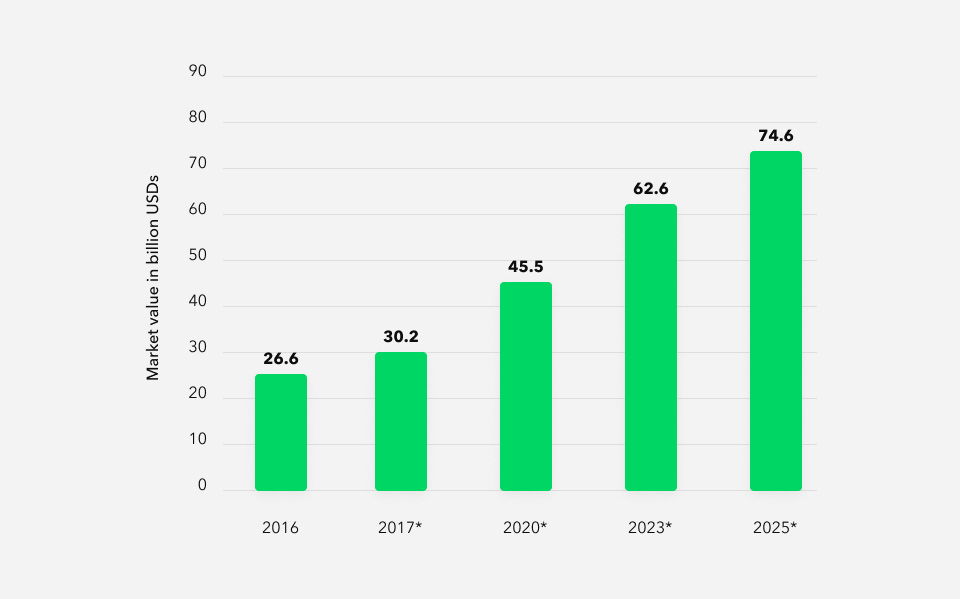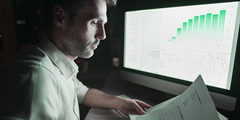Today, retail has become one of the prospective industries that have witnessed the substantial digital transformation from the past few years. Innovations in the digital space have reshaped the online shopping experiences and customer expectations in physical stores.
The introduction of modern technologies like Cloud, AI, Machine Learning, and IoT has made this sector's scope vast and profitable. Since the last few decades, brick-and-mortar retail stores have been closing in great numbers worldwide. But with the rise of technologies like AI and VR, these stores got an opportunity to stay alive in the coming years.
If you are in a retail business, you might have heard about the term "video analytics." But, how can video analytics be helpful for the retail industry? Let’s take a look at how intelligent video analytics transforms the retail sector and customer experience.
Retail Video Analytics
Video Analytics, also known as Video Content Analytics, is an AI-based analytical solution that processes digital video signals using a unique algorithm to perform security-related functions. It uses advanced algorithms and machine learning that automatically monitor, analyze and manage large volumes of video data. These data analytics systems digitally analyze the video inputs and convert them into intelligent data that help make profitable decisions.
Since its inception, video analytics has been used as a security solution that provides security to infrastructures by identifying intruders, frauds, tracking people or objects, and creating alarms to avoid losses from such incidents.
However, with the passing years, the video analytics concept has moved to a whole new stage. It is now considered a powerful tool for business growth and transforming the customer experience. The demand for video analytics systems has risen in the past few years as humans cannot audit the large volume of video data created by surveillance and other cameras.
Video Analytics Market Size
If we talk about the global market size of video surveillance, stats are entirely jaw-dropping. As per Statista, in 2025, the global video surveillance market is projected to reach 74.6 billion U.S. dollars in revenue, increasing from the 45.5 billion U.S. dollars anticipated in 2020. The forecast for 2025 values the global video surveillance market nearly three times its size in 2016.

How Video Analytics Help Retailers?
The use of video analytics in the retail industry is not limited to security protocols and loss prevention. It is more than that; video analytics provides insightful business intelligence to retail businesses that help them make effective decisions.
It allows retailers to improve the customer's shopping experience by eliminating customer service time. It also promotes easy shopping by avoiding overcrowding and offering the best prices and purchasing options. This solution has become a vital tool for retailers to enhance their business growth and expand their customer base.
The retail industry has opted for video analytics and IP camera technology to avoid fraud and losses. Retailers use this powerful video analytics capability to stay competitive in their business market by delivering value to the customers and enhancing loyalty.
With video analytics, retailers can get insights about:
- Who are their most frequent customers?
- Who left the store without any purchase?
- Which product has the most demand?
- Whether the customer has made a single product purchase or multiple?
- Are customers comparing products with other brands?
Where can retailers use video analytics?
Video analytics can be helpful in various scenarios, including-
1. Motion Detection
Motion detection is considered one of the most essential and effective security features. Motion detection helps control theft and unauthorized admission of customers or staff members in “no-entry zones” of the retail store during and after working hours.
2. Fraud Detection
To identify and detect the frauds done by employees in inventories, orders, or store statistics, retailers prefer using Video Analytics solutions.
3. Shoplifting
Stealing goods from the store while pretending to be customers is the most common activity performed by intruders and thieves. To avoid such incidents, video analytics is highly used by retail stores.
4. Heatmaps
Heat mapping is a graphical representation of in-store roaming and identifying the time spending patterns of the customers. Retailers widely use this software to optimize store efficiency. It is always good for the retailers to know where their customers shop more.
By adopting Video Analytics, businesses can quickly determine how specifically their customers navigate the store. It traces every shopper in the scene and generates insights into their passersby, impression, and dwell time activities.
5. Facial Recognition
Facial recognition plays a vital role in understanding customer behavior related to particular products or services. Facial recognition is not sci-fi; today, security cameras can track the customer's facial expressions by pinpointing them to their face.
Face recognition technology helps retailers understand whether the product has a positive, negative, or neutral impact on customers. It helps to determine their products’ demands and customers' preferences.
6. Tracking Customer's Dwell time
Tracking how much time a user spends in a particular area is essential for businesses to boost sales performance. It also helps retailers in making decisions related to moving shelves and making specific areas more navigable.
7. Queue Management
Managing customers during their check-out time and the employees' response at the counters significantly impact the business's image. Suppose your customer is waiting for 10 minutes to check out and your cashier is busy with his phone or something else; it ultimately leads to massive kiosks.
Here, queue management algorithms in VCA helps managing queue along with the estimated waiting time of each person and parallelly calculates the delay in services for particular lines. This helps to reshuffle the customers between the queue and make billing quickly.
8. Employee Performance
Many times, a company fails to identify potential employers. There are times when certain employees cost massive amounts without work, whereas some of the employees are generating revenues. Many stores forgot the value of looking into employee performance, but security footage makes it easy for them to preview their activities and evaluate their performance.
So, these are a few critical areas where retailers can use Video Analytics and track the activities of their business and customers.
Moving on, let's discuss the benefits of Video Analytics.
Benefits of Video Analytics
Video Analytics provides various benefits, including-
1. Store Traffic Management
The retail stores are often overcrowded, and retailers fail to identify and manage such massive traffic. Using video analytics, retailers can easily maintain store traffic as it determines the pattern of in-store traffic and the reason behind them.
It analyzes the peak time and high occupancy zones and helps retailers identify traffic early and respond accordingly. With VCAs, retailers effectively respond and keep their customers engaged.
2. Product placement
Product placement is an essential metric of in-store management; it leads to more robust engagement and enhances ease of shopping. With heat maps, crowd monitoring, and conversion rates, retail video analysis formulates effective product placement.
3. Monitor Consumer Demographics
Video analysis software helps retailers to increase retention and drive more sales by analyzing the consumer's demographics. This gives retailers a better understanding of their preferences and choices and helps expand their business reach and grow their customer base in other demographics.
Final words
One can easily predict that the video analytics market will be thriving in the next coming years. This technology is seamlessly embedded in the retail sector and benefits it in several ways. Retailers get assistance from AI-based video analytics, whether content sharing, security, product monitoring, or fraud prevention. If you are a retail store owner, it is high time for you to switch on to these technologies and manifold your business sales and customer base.
If you are planning to transform your existing retail store digitally, we can do it for you. Rapidops is a leading digital transformation company that provides flawless digital services using the best technologies. Schedule a call today to discuss your idea and hire us as your digital product development partner.

Vandana Parashar
Vandana Parashar is a Content Writer and a learner with an ongoing curiosity to learn new things. She writes for B2C and B2B businesses, creates content that holds attention, builds authority, and drives action.

Let’s build the next big thing!
Share your ideas and vision with us to explore your digital opportunities
Similar Stories
- Analytics
- undefined Mins
- July 2019

- Analytics
- undefined Mins
- March 2023


Receive articles like this in your mailbox
Sign up to get weekly insights & inspiration in your inbox.

